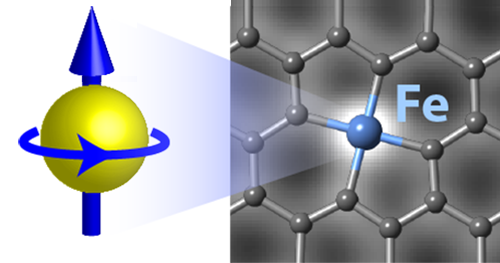Measuring Spin One Atom at a Time
The spin of an atom might one day store information at the smallest scales conceivable. To realize this goal, researchers need to be able to control the effect that chemical environments have on an atom’s spin. A new experiment employs electron microscopy to probe the spin state of individual metal atoms bound within a sheet of graphene. The results show that atoms bound to certain defects reside in a high-spin state that is better suited for storing information.
The total spin of an atom is related to its magnetic moment, which is why higher spin atoms are considered more “legible” for magnetic-based writing and reading information. Transition metals tend to have high spin due to several unpaired electrons. However, when an atom is bound on a surface or within a molecule, electrons may pair up, resulting in a low-spin state.
To study these environmental effects, Kazu Suenaga and Yung-Chang Lin from the National Institute of Advanced Industrial Science and Technology in Tsukuba, Japan, and their colleagues developed a single-spin measurement technique. They investigated transition-metal atoms fixed in the two-dimensional carbon lattice of graphene. The team prepared graphene sheets with several types of defects (e.g., vacancies or dopant impurities) that acted as binding sites for transition-metal atoms (either iron or chromium). The researchers imaged these atoms with scanning transmission electron microscopy (STEM) and then determined the spin state of each atom by measuring the energy lost by the transmitted electrons. Certain defects, such as those with oxygen dopants, produced a higher spin state than other defects. The results could be used to optimize a material’s spin properties for information storage.
This research is published in Physical Review Letters.
–Michael Schirber





